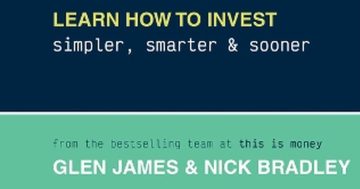An investment plan is an action plan for, hopefully, increasing wealth. Kelly Simpson* outlines the basics of a successful one.
 When you have an investment plan, you know ahead of time how you’re going to distribute your money to the investments you want to make.
When you have an investment plan, you know ahead of time how you’re going to distribute your money to the investments you want to make.
These investments commonly include stocks, ETFs, managed funds, property and superannuation.
There are heaps of benefits to having an investment plan in place.
It can help you predict how much money you’re likely to have at a given milestone.
It can make you think twice about spending your money on less meaningful things.
You can take advantage of dollar cost averaging.
And you can know if you’re on track for the things you want to do with your one wild and exciting life.
How to set up an investment plan
- Start with a budget and timeframe
First you’ll need to understand how much money you can regularly commit to investing — and what ‘regularly’ means to you.
A good way to get started is with a budget.
The 50/30/20 budget is a popular choice, but there are heaps of different types of budgets.
You may decide to start with a lump sum with a view to watching it grow over time.
Or you could commit to making a series of smaller micro-investments.
Remember you can regularly update and make changes to your plan, so if you find you’re spending too much or could be spending more, you should be able to factor that in.
There are investment calculators online that can help you see the impacts of different investment amounts and frequencies.
Ultimately you want to know how much money you can set aside.
- Consider your risk appetite
This is where risk comes in.
Different types of investments carry different types of risks — and there’s always the risk you’ll lose money.
Understanding the risks can be a really great way of making sure you actually understand what you’re investing in.
There are many different investment risks: some include market risk, which is when your investment is impacted by the whole market’s performance; inflation risk, which is when your investments are making lower returns than inflation, so you’re losing money; and timing risk, which is when you might have to sell out with lower returns or loss of capital, due to a market cycle.
Your comfortability with these risks is what makes up your risk tolerance.
How much money would you feel comfortable losing if things went wrong? Hardly any? A little bit? A bit more?
Understanding this can help you decide how much money you want to invest — and what to invest it in.
- Research your options
Deciding what to invest in can be a bit like choosing the ride you want to go on at the Easter Show.
Do you choose the ferris wheel, with steady ups and downs and a more predictable cycle?
Or do you go for the rollercoaster, with dramatic twists and turns that sometimes leave you hanging upside down?
Good questions to ask yourself include what your goals are, how long your timeframe is, and how comfortable you are with the risk profile of the particular investment you’re considering.
Would you be able to sell out quickly, if you needed to? What are the fees and charges like? How about tax? Have you done your research?
Risk and reward relate to one another, too.
In general, less risky investments, such as keeping your money in a term deposit account, or investing in bonds, have tended to have lower average returns.
More risky investments, such as property and shares, tend to have higher potential rates of return.
But by no means are there any guarantees.
Check out our explainer about investment risk for more.
- Build and balance your portfolio
If you’re ready to start building your portfolio, you should know:
- How much you have to invest, and how regularly you want to top up.
- What your goals, timeframe and risk profile are.
Choosing your investments can be a lot of fun.
It can be an opportunity to make active votes for what you believe in, decide whether you want to buy and hold, or be a more active trader.
Investment mix becomes important here.
If you’ve heard of diversification, that’s what that means.
Spreading your investments across a range of industries or asset types means that if one of them takes a dive, it won’t wipe you out.
But this can limit your upside, too.
There’s always a trade-off when it comes to investing!
It’s really important to research your investments before deciding to jump in.
Check out our resources that can help you do that, as well as our ideas for different ways you can invest your money.
- Manage and review
How often you review your portfolio can depend on what your goals and timeframe are – and whether you’ve chosen riskier or more stable investments.
If you have shares, you can usually track their performance on weekdays through whatever channel you bought them, though it’s important not to get swept up in market fluctuations.
If you purchased units in a managed fund or made extra super contributions, you can generally check out annual statements and fund reports to see how they’re going.
Keeping on top of your investments can help you spot issues and make changes proactively.
You may decide you want to review your investments quarterly so you don’t get too swept up in the trends.
Or you may have a longer timeframe and a yearly review could be enough for you.
What to do if this all feels a bit overwhelming
Obviously there’s a lot going on here.
If you’re feeling a bit overwhelmed, you don’t have to do anything right now.
You can keep researching and wait it out until you feel comfortable making your first move.
Don’t forget that it’s likely you’re already an investor through your super fund, and that might be enough for you right now.
Just remember that time in the market is often a factor for how much money you make, and getting started earlier can pay off.
*Kelly Simpson is a contributor at Spaceship.
This article first appeared at spaceship.com.au.











